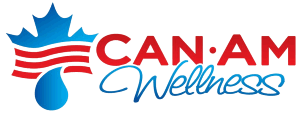Test by
Dr. Wladyslaw Kowalski
Aerobiological Engineering, LLC
11-18-2015
Executive Summary
The model 2000 air disinfection unit consists of a charcoal filter, a HEGA, (High Efficiency Gas Adsorbers) Military Carbon Cloth Prefilter, a 0.1 HEPA filter and a UV lamp through which air is driven at airflows between 50 cfm and 340 cfm. Computer modeling and analysis of the UV disinfection unit indicates that it will remove pathogens from the air at high rates that approach 100%.
The UV Dose produced by the unit at the operating airflow of 50 cfm is 35.5 J/m2 and the UV Dose produced at 340 cfm is 5.22 J/m2. Eight bioweapon agents have been evaluated, these being TB bacilli (Mycobacterium tuberculosis), anthrax (Bacillus anthacis spores), smallpox (Variola virus), botulinum toxin, Influenza A virus, SARS virus, Ebola virus, and Yersinia pestis (plague), and high removal rates were found for all agents, these having an average removal rate of 99.999% at the operating airflow of 50 cfm, and 99.998% removal at the operating airflow of 340 cfm. Analysis of several hundred pathogens including bacteria, viruses, fungal spores and protozoa indicates that the net average removal rate for all pathogens exceeds 99.99%. Modeling of the Model 2000 unit in a 400 ft2 room indicates it will rapidly draw down the airborne concentrations of pathogens to harmless levels within a few hours.
Description of the System
The Model 2000 air disinfection system consists of an ultraviolet light in a cylindrical chamber into which air flows into the unit through a carbon filter and a HEPA filter before reaching the UV irradiation chamber. The UV lamp is a U-tube type lamp 7” long, Model GUPH22-212T5L/4P, with 19 W of power input and 6 W of UV output. It has a diameter of 15 mm (1.5 cm), or a radius of 7.5 mm (0.75 cm). Based on the vendor drawing (Light Sources GU22-212T5L) the arclength scales to approximately 29.2 cm. In the case of U-tube type lamps the arclength is not the length of the lamp body but about twice the body length plus the tip portion (the curved bend). The lamp rating is stated as 55 microW/cm2. The lamp has a 1” (2.54 cm) base and sits 1.25” (3.175 cm) below the top of the chamber. The UV chamber has an inside diameter of 7.25” (18.415 cm) and is 13” high (33.02 cm). The nominal flow rate through the chamber is 50 cfm and the highest flowrate is 300 cfm. The HEPA filter is a custom filter model 20510. The face area through which the airflow enters the UV chamber is Pi()(7.25)(13) = 296 in2 or 1910 cm2.
Table 1 summarizes the UV chamber dimensions and operating parameters. The Exposure Time at the lower airflow of 50 cfm is 0.373 seconds and this is within the minimum recommendation of 0.25 seconds per IUVA (2005). The Exposure Time at the higher airflow of 340 cfm is 0.055 seconds and this does not meet the minimum recommendation of 0.25 seconds. It can be seen in Table 1 that the air velocity through the HEPA filter is between 24 fpm (at 50 cfm) and 165 fpm (at 340 fpm). Since these face velocities are well within the minimum recommended face velocity of 250 fpm (ASHRAE) the HEPA filters will perform at least as well as their rating at 250 fpm.
Analysis Results
Two conditions were analyzed, an airflow of 50 cfm and an airflow of 340 cfm. Table 4 summarizes the results for both cases. At 50 cfm the UV Dose is 35.5 J/m2 which rates an URV 14. At 340 cfm the UV Dose is 5.22 J/m2 which rates an URV 10.
For this unit, the microbes and agents of most interest include TB bacilli, Anthrax, smallpox, and botulinum toxin. The removal rates of these agents are summarized in Table 5. The HEPA removal rates will be at least the rates shown in Table 5 because the air velocity through the HEPA filter is well below the minimum recommended for such filters. Also, the HEPA removal rates will be the same for both cases, 50 cfm and 340 cfm, although it is likely that slightly higher HEPA removal rates will occur at 50 cfm. Botulinum toxin is not susceptible to breakdown under UV exposure but it is removable by filtration. The carbon filter will also have some effect on removal of botulinum toxin (Gomez 1995)Toxins used as bioweapons are typically ground to a particle size of about 1-6 microns and a logmean diameter of 1.5 microns is used to assess the removal rates of this toxin by the HEPA filter.
Click HERE for more detail and charts.
